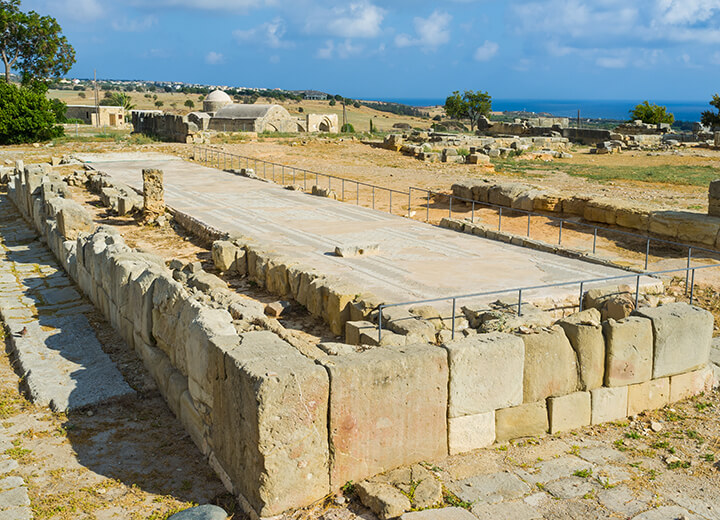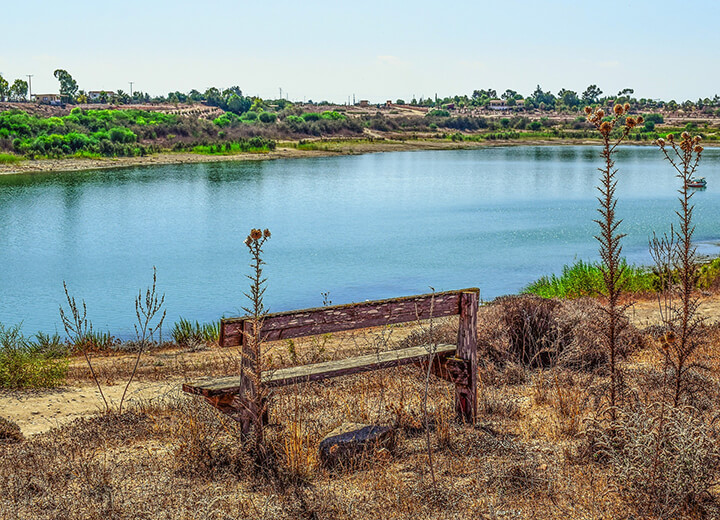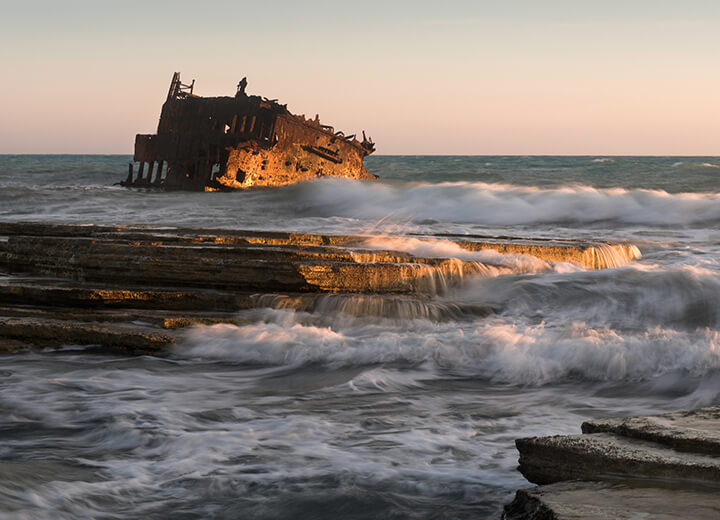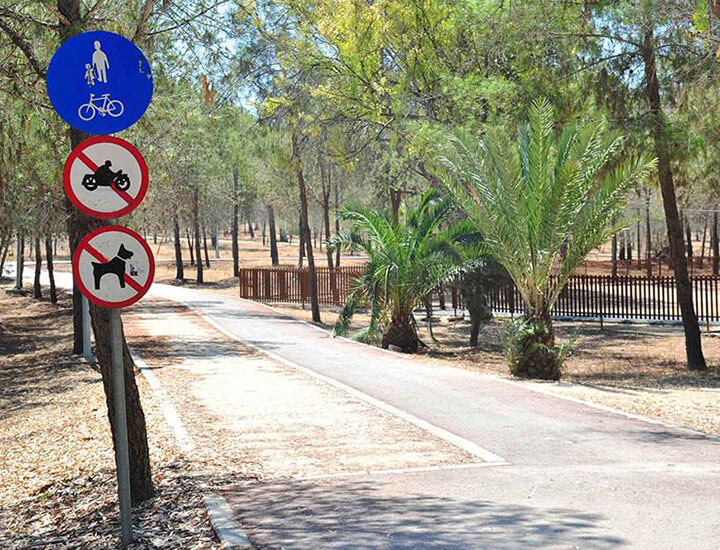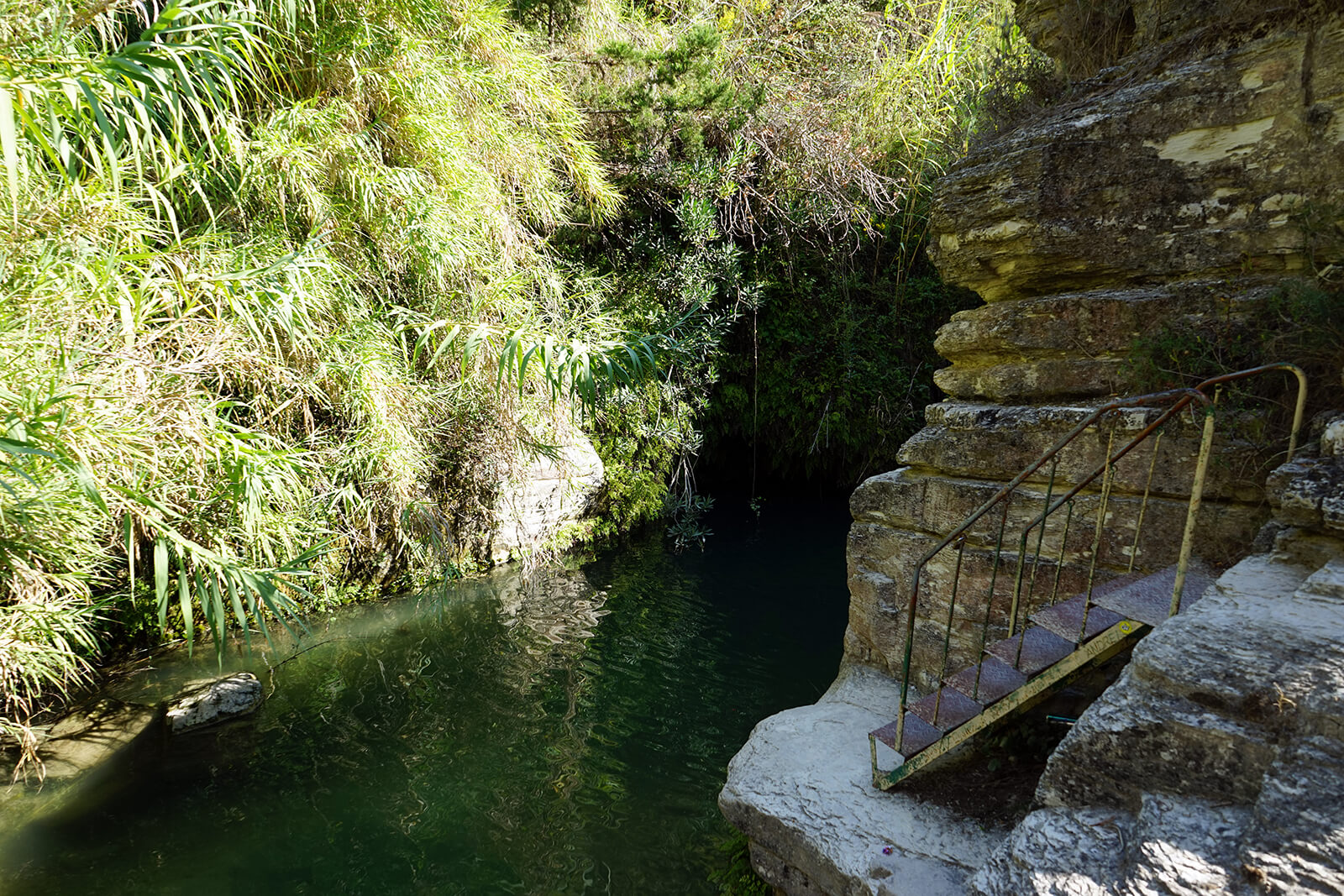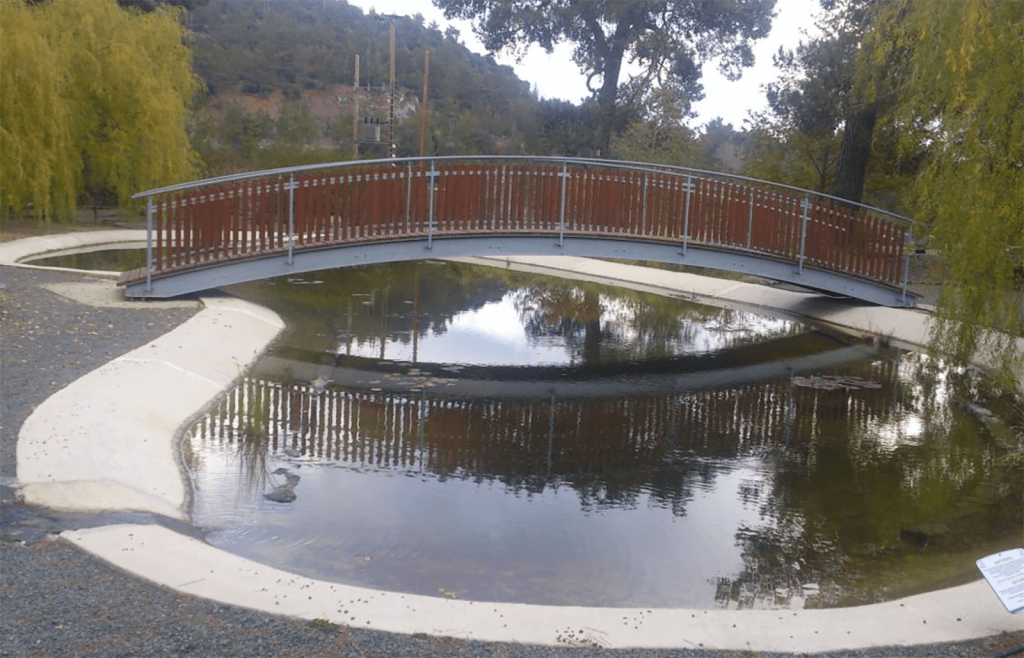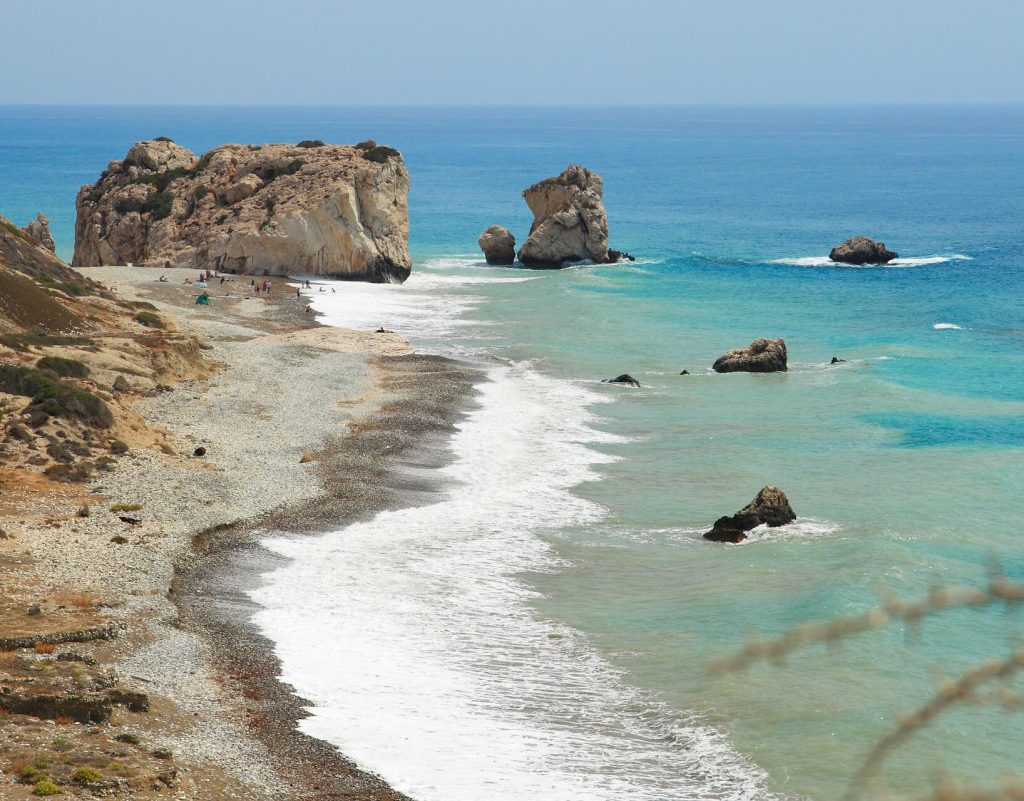 Petra tou Romiou, also known as the Rock of the Roman is a beautiful destination surrounded by mythological legends. Located in Paphos, Cyprus, this area is known as the Goddess Aphrodite’s birthplace.
Petra tou Romiou, also known as the Rock of the Roman is a beautiful destination surrounded by mythological legends. Located in Paphos, Cyprus, this area is known as the Goddess Aphrodite’s birthplace.
The breathtaking coastline is on the southwest coast of Paphos, and visitors won’t soon forget the beauty of this area.
The Birthplace of Aphrodite
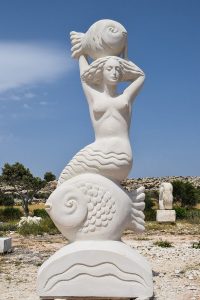 The Greek goddess came to the world in an unconventional way. After Uranus, also known as Father Sky, had his “manly parts” cut off and thrown into the sea, Aphrodite rose from the foam they caused in the water.
The Greek goddess came to the world in an unconventional way. After Uranus, also known as Father Sky, had his “manly parts” cut off and thrown into the sea, Aphrodite rose from the foam they caused in the water.
Foam can be translated to aphros, and this is where Aphrodite acquired her name.
It’s said that Aphrodite rose out of the water and rode a shell onto the beach here. Artistic depictions of her show a fully grown, nude woman being ushered to shore from the waves.
Though this is not Aphrodite’s only birth or origin story, it’s the one connected to Petra tou Romiou. Homer depicted Aphrodite as the daughter of Zeus and Dione, but many still connect Aphrodite to the famous coastline in Cyprus where they believe she was created. Travelers venture to this location to experience the legend and magic of the beach.
Later Legends of the Rock
Aphrodite’s birth is not the only legend of the boulder. Digenes Akritas, a folk song that is famous for being part of the Arctic Songs, tells of Basil.
This heroic Byzantine warrior supposedly hurled the massive stones onto the coastline to keep the Saracens Arabs from making it onto the shore. The “Rock of the Roman” refers to Basil, not Aphrodite, even though his legend formed centuries after Aphrodite’s.
Digenes means two-bloods, and this refers to Basil being half-Byzantine and half-Arabic. Due to Basil’s hurling abilities, the boulder on the coastline is called Saracen Rock.
Petra tou Romiou offers multiple mythologies to make any visitor wonder what the legends looked like played out across the sands of the sea where all of the beautiful scenery now stands.
Where is Aphrodite’s Rock?
Cyprus is an island located in the Eastern Mediterranean. It’s the third largest island in the region, and it’s situated near Turkey, Israel, and Syria. Sitting in the middle of different continents and surrounded by beautiful waters, it’s no wonder this island is ripe for stories about beauty and creation.
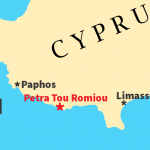 Petra tou Romiou sits off the B6 highway on the southwestern corner of Cyprus. If you are traveling from either Limassol or Paphos, take the A6 highway. You will get on B6 near Kouklia. There will be plenty of signage telling you where to turn off to get to Petra tou Romiou.
Petra tou Romiou sits off the B6 highway on the southwestern corner of Cyprus. If you are traveling from either Limassol or Paphos, take the A6 highway. You will get on B6 near Kouklia. There will be plenty of signage telling you where to turn off to get to Petra tou Romiou.
This coastline is considered one of the most beautiful in Cyprus. When the waves break, some say it’s not difficult to imagine a human form coming from the foam created before the water goes back down.
Which rock is the right one?
Some visitors are confused when they arrive and see not one, but three large stones nearby. Aphrodite’s isn’t marked, so they usually have to ask the gift shop attendants.
The answer is, it depends. Some say the largest boulder is the correct one and others say it is a smaller darker stone off to the left.
Perhaps this adds some mystery to the location and story.
How was Petra Tou Romiou created?
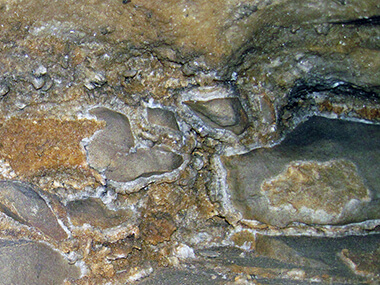
Geologically, the large stones are an interesting study. Made of limestone breccia, the rocks are also smooth in areas. This feature means it’s possible that two stones rubbed together, creating friction that caused a slick surface on specific areas.
Petra tou Romiou was likely a part of a larger mixture of stones at one point. Now standing on its own, it has a unique composition that makes it a magnet for mythical creation stories.
The Official Cyprus Visitor’s Guide has an audio recording of the Geography of Petra tou Romiou (mp3, 3:40). It’s an interesting listen and covers the beach and surrounding areas.
What to Expect When Visiting this Landmark Beach
Visitors can take a bus to the beach or drive themselves. Signs make finding the location easy, and parking is available.
Adding to the mystery and magic of the beach, visitors will walk through a tunnel that runs under the highway to gain access to the beach.
There’s also a restaurant and gift shop for those who want to enjoy a meal and take a keepsake back home with them.
Myths and Legends
While there, many visitors like to try to absorb some of the magic associated with this area.
Legend says that swimming around the boulder can offer eternal beauty if one swims around it three times counterclockwise. However, the sea in this area is tumultuous, and it’s not recommended that people try to swim in these waters when they are rough.
If the allure of never-ending beauty proves to be too much to resist, exercise caution in the water and make sure it’s the right time for a swim and not a time when the waves are crashing roughly into the boulders.
Others say finding a heart-shaped stone or swimming at midnight will offer help in the beauty and love departments. Even if a visitor doesn’t swim or find distinctive pebbles, they will still discover the beauty of this area is enough to make the trip worthwhile.
Best Time to Visit Petra tou Romiou
Planning a visit at sunset is recommended since the view is breathtaking as the sun takes its last dip for the day.
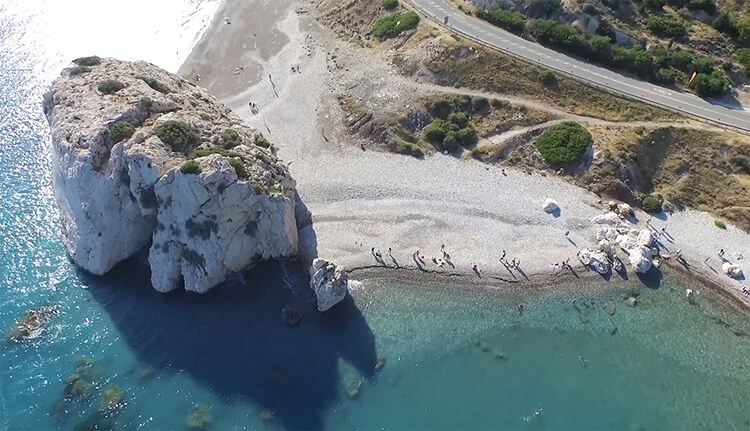 Aerial view of the beach.
Aerial view of the beach.
Due to the wind and roaring waters, visitors will not have a hard time imagining the magic that gives this location its legends.
Photo opportunities are abundant, so bring a camera to catch the beauty to look upon later.
Just up the road from the beach is the town of Kouklia, known as Old Paphos. There is an archaeological park there that houses ruins of an ancient Temple of Aphrodite. Combine these two related sites into one trip.
A Monument in Danger
A recent problem involves tourists carving their names and locations into the side of the boulder, vandalizing what is supposed to be a beautiful piece of nature. One lady even spraypainted the word “love” on the rock while arranging pebbles in a heart formation along the beach.
Tourists have also been known to take pieces of the limestone with them, leaving the area disturbed and disheveled.
Practice conservation efforts when visiting the site by leaving the coastline and the boulders in the same condition you found them.
Take pictures, roam the beach, and buy a souvenir, but don’t disturb the beauty of nature.
